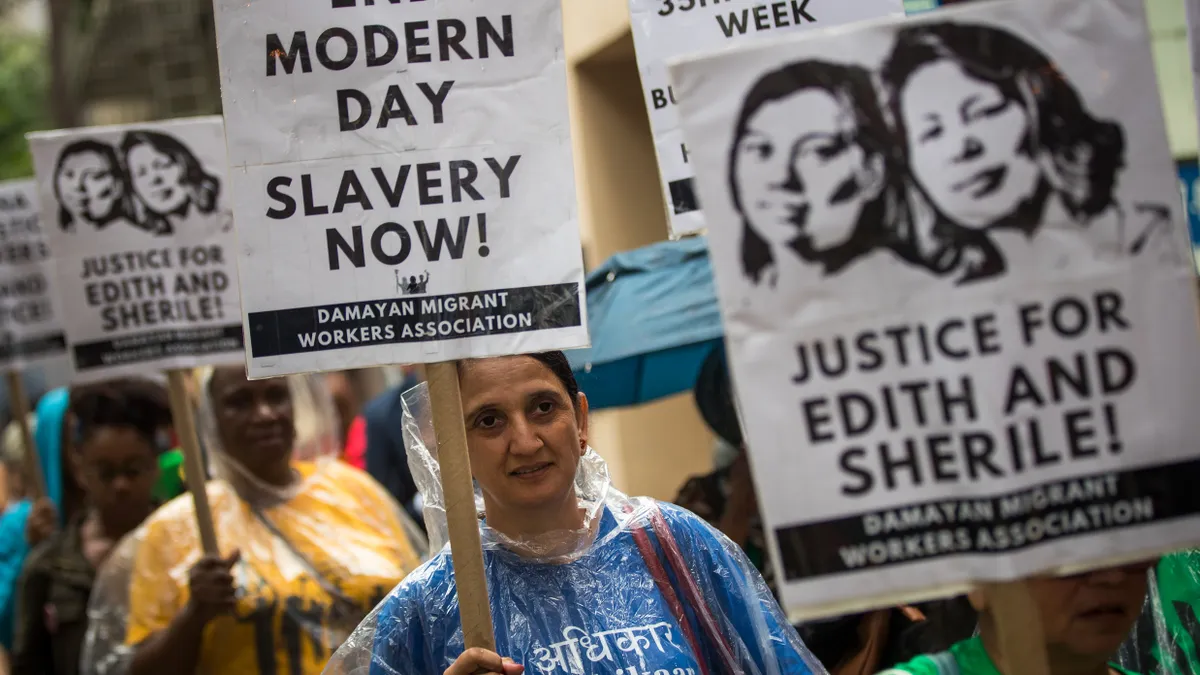The number of people living in modern slavery has grown to 50 million as global conflict, COVID-19 and climate change exacerbate exploitative conditions, according to the latest Global Slavery Index from human rights advocacy group Walk Free.
The group contends that government action on the issue has “stagnated,” with no world government on track to achieve the United Nations’ target goal of ending modern slavery, forced labor and human trafficking by 2030.
The U.S. is “by far” the biggest importer of at-risk products, which Walk Free estimated at $169.6 billion in imports, according to a June press release. That figure is more than three times that of the next largest single importer, Japan.
In a statement, Walk Free Founding Director Grace Forrest described modern slavery as a “manifestation of extreme inequality” and pointed to supply chains’ outsized role in causing the crisis.
“It is a mirror held to power, reflecting who in any given society has it and who does not,” Forrest said. “Nowhere is this paradox more present than in our global economy through transnational supply chains.”
Countries with the highest populations living in modern slavery
| Country | Estimated people in forced labor or marriage |
|---|---|
| India | 11 million |
| China | 5.8 million |
| North Korea | 2.6 million |
| Pakistan | 2.3 million |
| Russia | 1.9 million |
| Indonesia | 1.8 million |
| Nigeria | 1.6 million |
| Turkey | 1.3 million |
| Bangladesh | 1.2 million |
| United States | 1.1 million |
Source: Walk Free Global Slavery Index
The U.S. is also among the G20 nations and countries overall with the most people living in modern slavery, defined as forced labor or marriage, according to Walk Free’s estimates.
At the same time, the U.S. is among the top five countries taking the most action currently to address the issue, along with the U.K., Australia, the Netherlands and Portugal.
Countries with the highest prevalence rates per population tend to be affected by arm conflict, have weak governance and often state-sponsored forced labor, according to the group.
The index also breaks down the products that are most at-risk for links to slavery in their supply chains. Walk Free bases its estimates on countries and industries involved in production and suspected cases of forced labor identified in manufacturing the goods.
When looking at value, chief among at-risk products are electronics, followed by garments, palm oil, solar panels and textiles.
The group issued five key recommendations for policymakers to combat the issue, including stronger measures to block governments and businesses from sourcing products and services linked to modern slavery.














